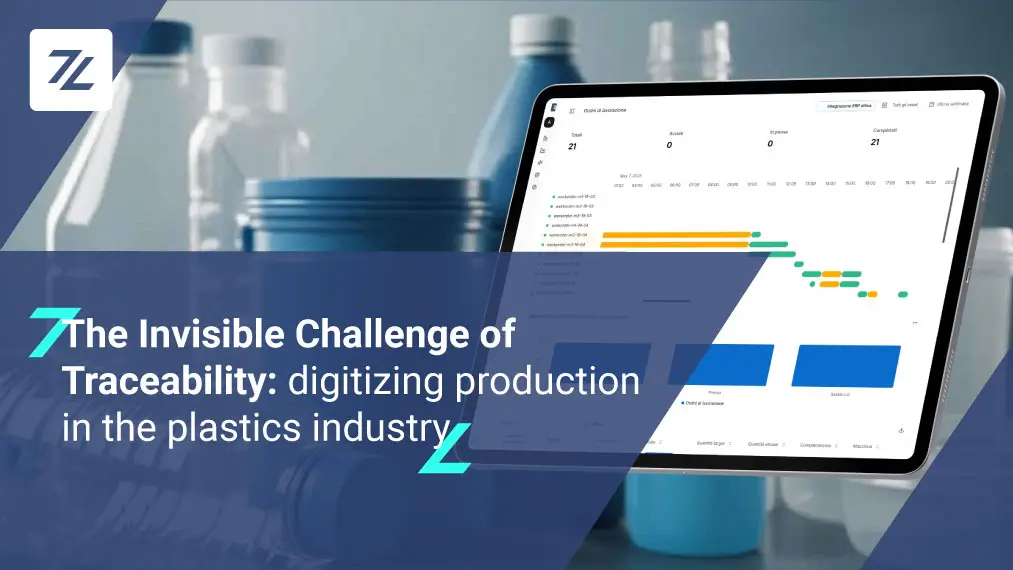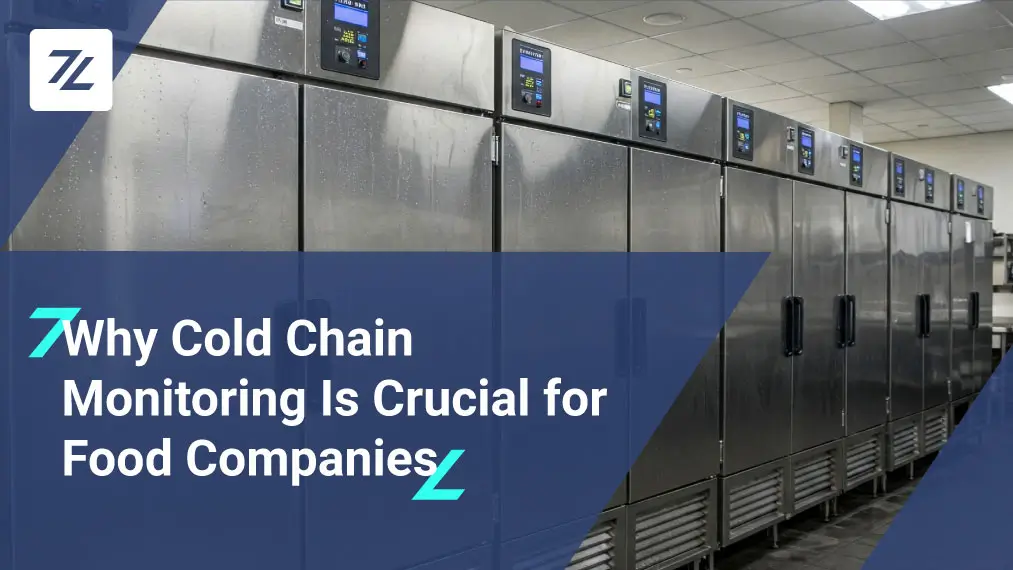The plastic sector, one of the most dynamic and growing industrial fields, is currently facing unprecedented challenges. Among these, reducing environmental impact and optimizing production processes are priorities.
In this context, Industrial IoT solutions emerge as essential tools to transform challenges into opportunities, to better track costs, and monitor energy consumption in order to reduce waste and become more competitive in the market.
Continue reading the blog post to discover how it is now possible to calculate productivity and operations efficiency thanks to Zerynth’s industrial AI.
Why Digitalize the Plastic Sector
Plastic production is a highly energy-intensive sector that requires precision, efficiency, and constant monitoring of energy consumption. With the adoption of IoT and AI technologies, it is possible not only to improve these aspects but also to reduce costs and increase environmental sustainability.
Through the Zerynth Production Insights App—and more generally the entire Zerynth Platform—it is made simple for companies in the plastic industry to embrace a complete digital transformation, streamline processes, and improve the quality of the finished product.
Concrete Benefits for the Plastic Sector
In the industrial context, operational efficiency and product quality are two fundamental pillars for a company’s success. With the evolution of monitoring and analysis technologies, it becomes possible not only to maintain but also to significantly improve these critical aspects. Industrial AI and IoT solutions emerge as advanced technologies capable of transforming the way companies can manage and optimize their production processes.
The Zerynth platform offers a range of features, including customizable dashboards and smart notification systems, that allow companies to have tighter control and a deeper understanding of their operations and machinery functioning. These benefits translate into a tangible improvement in operational efficiency and, consequently, their competitiveness in the market.
- Energy Consumption Monitoring: With more precise management of energy consumption, companies can significantly reduce operating costs. The Zerynth Platform allows for ready-to-use visualizations that provide complete visibility on costs, energy consumption, signal anomalies, and opportunities for energy savings.
- Product Quality Improvement: Detailed analysis of production processes allows for identifying factors that affect product quality. Targeted interventions can thus be made to ensure high standards in every batch of production.
- Precise Tracking of Production Orders: Optimal management of resources and raw materials, reducing waste and increasing production efficiency. This tracking also allows monitoring the life cycle of products, ensuring compliance with quality and safety standards.
- Monitoring Production and Cycle Times: Assess the efficiency of each phase of the production process, identifying bottlenecks and inefficiencies that can slow down production or increase costs. Having a clear understanding of cycle times helps companies ensure that resources are used optimally, maximizing productivity and minimizing downtime.
Exploring the Production Insights App
The Production Insights App is an integral part of the Zerynth Platform, designed for more detailed analysis related to the production monitoring of SMEs’ manufacturing plants. Tracking of orders, insights on productivity, calculation of OEE, and production effectiveness for each ongoing operation. These data are then analyzed to provide operational insights that can guide strategic decisions and continuous improvements.
KPIs are essential for assessing the effectiveness of industrial operations. The Zerynth Platform enables real-time monitoring and maintenance management, thanks to data collection that allows the calculation of various strategic KPIs.
These include:
- Net Working Times: Precise measurement of the time when machines are operationally active.
- Energy Consumption: Monitoring the energy consumption of machines and operations, allowing an assessment of energy efficiency.
- Energy Costs: Analysis of energy costs per machine and per operational cycle.
- Operational Efficiency: Calculation of operations efficiency based on average cycle time and production quality.
- OEE: An indicator that combines availability, performance, and quality to measure the overall efficiency of machines.
Productivity Analysis
Productivity is a measure of the efficiency with which goods or services are produced. It is commonly expressed as the ratio between output (finished products) and input (resources used such as time, labor, and materials).
In other words, it indicates how well a company transforms resources into products. An increase in productivity implies that more products are created with the same amount of resources, or the same amount of products is created with fewer resources.
Using these data, the App allows analyzing productivity on two levels: machinery and operations. This includes the evaluation of:
- Net working times per machine and per operation
- Energy consumption and associated energy costs
- OEE: Operational efficiency, quality, and performance
Operations Analysis
Operations, or manufacturing, refer to the daily activities that a factory or company performs to produce goods or services. This includes managing labor, machines, monitoring production processes, logistics, and other aspects related to the creation of the product. The goal of operations is to ensure that production takes place efficiently, timely, and with quality.
The importance of traceability also lies in the ability to respond quickly to any product recalls, thereby improving risk management and consumer trust. Moreover, the analysis of data collected by tracking systems can provide valuable insights to optimize processes and innovate offerings, keeping companies competitive in a rapidly evolving market.
The KPI of operations effectiveness is a specific metric used to assess how effectively a company’s operations are achieving set goals. This KPI may encompass different aspects of operations, such as production speed, quality of finished products, reduction of operating costs, and minimization of machine downtime.
Optimizing operational efficiency is crucial for Italian companies to monitor the progress of their production. Having a thorough understanding of efficiency not only at the level of individual machinery but also of the operations that take place on them or between multiple machines, is essential.
Using tools like HMI, barcode scanners, and RFID devices, or integrating with management systems like MES and ERP, the Zerynth platform allows tracking operations and monitoring the entire production environment.
With automatic data recording, Zerynth makes it easy to assess costs, times, quality, performance, and consumption of each operation at any period, allowing comparison of KPIs between different machinery.
The Zerynth Production Insights App, in particular, facilitates the calculation of the Operational Efficiency KPI for each individual operation, based on quality and performance indicators.
Below, some of the main KPIs used to monitor operations performed on machinery:
- Evaluation and analysis of Operational Efficiency
- Analysis of cycle times and performance of individual operations
- Monitoring of quality associated with each operation
- Monitoring of energy consumption of operations
- Comparison of main KPIs for operations performed on multiple machinery.
Share This Story, Choose Your Platform!
Follow Zerynth on
Latest Posts





